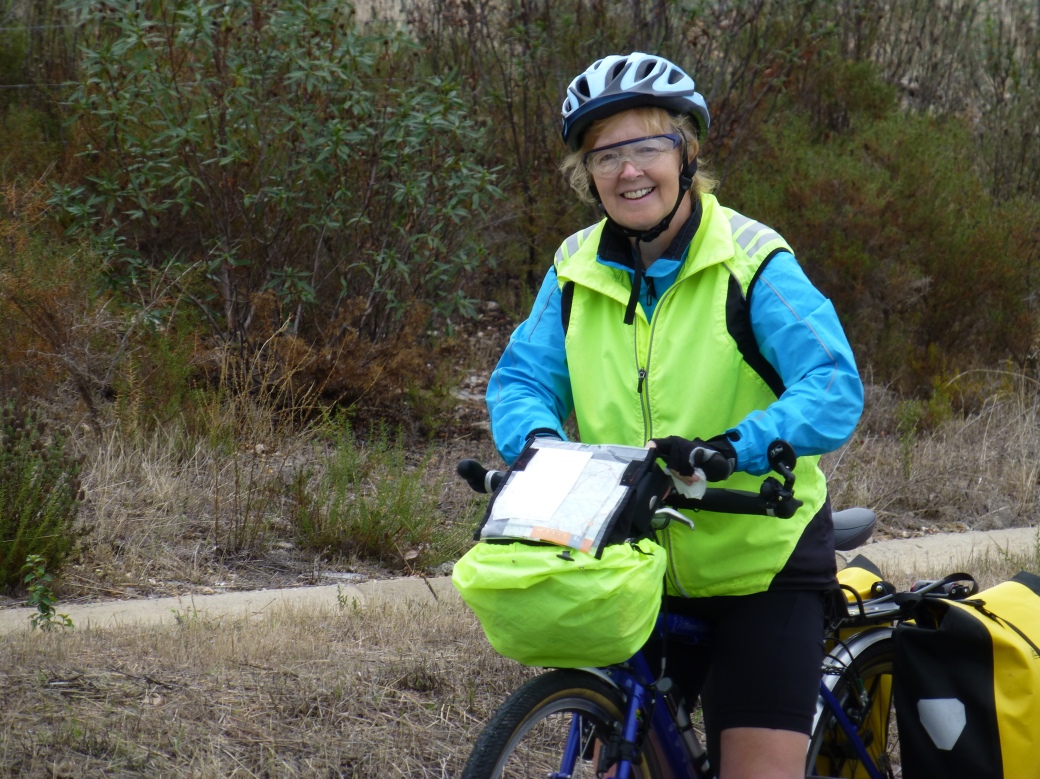Some ‘expert advice’ in response to a letter in the current CTC “Cycle” magazine caught my attention: and rather got my dander up. CTC member David Watson wrote in lamenting the organisation’s unwillingness to recommend cyclists wear bright clothing and the current fashion for very dark cycle apparel.
In response, Cherry Allan comments that CTC would be happy to recommend wearing hi-viz or ‘day-glow’ clothing if there was any evidence it made cycling safer: as they have found none, they are not willing to do so. Several comments are made to support this stance, but none of them throw much light on matters.
Firstly, hi-viz is not to be recommended because it might lull wearers into a false sense of security. Well, yes it might, but equally so might a dozen other factors or inclinations. Is there any evidence that this is the case? I thought we were taking an evidence-based approach? No evidence is advanced for this proposition. Quite why someone concerned enough about their safety to wear hi-vis clothing would then assume wearing it made them safe I cannot imagine. In my experience the wary stay wary.
Next comes the statement that cyclists have been killed or injured while wearing hi-vis clothing. I don’t think this is an argument of any kind. For all we know the unfortunate cyclists might have failed to take a corner at speed with no other party involved: or the drivers concerned were colour-blind, or for that matter, blind drunk.
In relation to both of these points, nobody is saying that having hi-viz will guarantee your safety: only that it might make you easier to see. Defensive cycling and vigilance are still a big part of staying safe.
The ‘expert’ goes on to say that suggesting people should consider wearing hi-vis is somehow, ‘pandering’ to the lobby that seeks to blame cyclists or suggest they have somehow contributed to their accidents and injuries by not wearing protective gear or conspicuous clothes. This is a big red herring in this debate. The issue is whether these items contribute to personal safety or not. CTC is confusing its purposes here: taking a sensible attitude to conspicuity ought not to be seen as somehow reducing the effectiveness or potency of their campaign for other measures to make cycling safer. The one campaign is in no way dependent the other.
The CTC spokesperson ends by saying that their policy is informed always by the best available evidence and repeats they have found no evidence of hi-viz kit contributes to safety and they want to take an evidence-based approach to all issues. The trouble is, there is, as they say, no evidence to hand either way on this issue, so what are we to do?
Well, in the absence of evidence, surely it’s not a bad thing to fall back on common sense? If drivers see you, they are less likely to hit you, always assuming they are not doing so intentionally. If in doubt, play it safe: err on the side of common sense and caution. Be bright and be seen. What’s the down side? I just cannot see one.
Certainly we two will continue to sport our hi-viz waistcoats. They are second nature to us now and we don them as routinely as we do our helmets. We feel naked without them. Even in bright and sunny climes, where we are often almost unique exceptions. The only down side is that all our tour photos show us wearing the same gear!
Or maybe there is something I am missing?



As someone who as recently elected to have a cataract removed from one eye I am now acutely aware that anything that makes us as cyclists “more” visible is a good thing. I used the elected because for all intense and purposes I did not need to have it removed – I could still read a number plate at 20 metres (the UK driving standard (https://www.gov.uk/driving-eyesight-rules) but the improvement post surgery is astounding.
I wonder …….. how many drivers are there who do not meet the DVLA standard?
Nick
(a habitual high-viz wearer)
LikeLike
I came by to visit one of my new followers. I like what I see here. I’m a new fan of yours and a follower.
LikeLike
Cheers, John, thanks for the kind words. I see I was a follower of yours on WordPress, but somehow lost sight of you when you moved over to Blogger. I’ll be stopping by often now. Norman
LikeLike
High visibility clothing might not actually protect the rider, but I believe it would significantly reduce the chances of not getting hit, because the rider is visible. Afterall, the margin between being safe and being at risk is narrow for a cyclist. 🙂
LikeLike
“The big problem is cycling is considered unsafe by thousands who might otherwise have taken it up. Pushing a black and white agenda that helmets and hi-viz are vital says, “BE CAREFUL OUT THERE! CYCLING IS DANGEROUS!” For the most part it isn’t. But a sedentary lifestyle? Now that’s dangerous.” (http://www.theguardian.com/environment/bike-blog/2016/feb/04/vulpine-bike-clothing-company-models-without-helmets-dont-hate-us)
” … in the absence of evidence, surely it’s not a bad thing to fall back on common sense? If drivers see you, they are less likely to hit you … ” There is some evidence and it goes against “common sense”. Experiments have shown that drivers give less space to cyclists wearing hi-viz, that it, they overtake closer to a cyclist who wears hi-viz than to one who doesn’t.
LikeLike
Thanks for your comments, Ian and for popping by. I found your blog and look forward to future posts as a follower.
The Guardian article is well balanced and sensible and yes, I too want to persuade more people onto bikes and I want cycling to be routine and relaxed. I also like the idea that cyclists make there own choices about kit and equipment. My beef is with CTC (of whom I am a member) and their not being willing to promote the wearing of helmets and hi-viz clothing on the grounds that there is no evidence that they make cycling safer. If they took the stance of the article’s author – that there are times when wearing them makes sense and times when it may not – I’d be much happier.
I personally don’t accept that seeing lots of cyclists wearing helmets and hi-viz contributes to a widespread view that it must be a dangerous activity. The important thing is that we see lots of cyclists: the more common they are the more safer the activity becomes I feel and the more likely it is that we reach a tipping point where more people are willing to give it a go. I don’t think a cyclist in safety gear is signalling their fear: I assume they are saying, I am a safety conscious cyclist who dresses to minimise the risks I face. I myself don’t feel that by wearing my preferred gear I am somehow letting the side down and contributing to a feeling that cycling is a dangerous affair.
As to evidence that drivers give more space to cyclists without helmets and hi-viz I was aware of Dr Ian Walker’s study to this effect (something like an extra 2 inches on average I believe). However, the CTC letter I was commenting on, made no reference to it, merely arguing that in the absence of any evidence that hi-vis contributed to safety they were not willing to promote wearing it. My position is still that CTC ought to say that there are times and circumstances when wearing such gear makes more sense that wearing dark-coloured cycling gear – this being the focus of the original letter to them.
LikeLiked by 1 person
Thanks, Norman, I think I agree with most of that! 🙂
Thanks also for the follow – but I don’t write much to my personal blog – I seem to spend much more time keeping CTC Northampton’s blog up-to-date! https://ctcnorthampton.wordpress.com
LikeLike